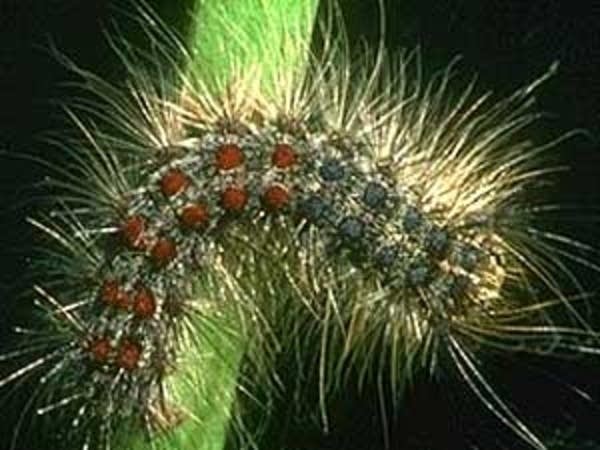Study finds invasive insects are a big contributor to climate change

Go Deeper.
Create an account or log in to save stories.
Like this?
Thanks for liking this story! We have added it to a list of your favorite stories.
Invasive insects like the gypsy moth and emerald ash borer — which are steadily marching across Minnesota and the rest of the country, feasting on trees and ultimately killing them — are also contributing to climate change, according to a study released last week.
Trees hold a tremendous amount of sequestered carbon in their wood, leaves and roots. When they die, much of that stored carbon is released into the atmosphere, which in turn helps trap heat in the atmosphere.
In the study published in the Proceedings of the National Academy of Sciences, researchers for the first time quantified just how much carbon is released into the atmosphere when all those trees succumb to non-native insects.
The researchers from Purdue University and the U.S. Forest Service found the dead trees release 5.5 teragrams of carbon annually into the atmosphere. That’s comparable to carbon emissions from 4.4 million cars, or nearly one-fifth of all wildfires in the U.S. annually.
Turn Up Your Support
MPR News helps you turn down the noise and build shared understanding. Turn up your support for this public resource and keep trusted journalism accessible to all.
The scale of the insects’ impact on climate change surprised researchers, said Andrew Liebhold, one of the study’s authors and a forest entomologist with the U.S. Forest Service Northern Research Station.
Typically researchers have focused on one species, or on localized areas. This was the first time scientists had taken a step back to look at the big-picture “cumulative effect on forests across the U.S.,” he said.

To estimate tree mortality and the amount of carbon released, researchers crunched data collected from nearly 93,000 forest plots, one-sixth of an acre in size, randomly selected across the country — a “powerful dataset” that scientists “drool” over, Liebhold said.
“The Forest Service has crews of people whose whole job is to go out every day to measure trees in these plots. Sometimes they have to hike in long distances to get to them. It’s a huge, massive effort,” he said.
They revisit the plots every five years to be able to accurately estimate tree mortality. Researchers number each tree, measure its height and diameter, count live and dead trees, and count seedlings and saplings.
Non-native insects have been hitchhiking to the U.S. since at least the 19th century. The gypsy moth first arrived in North America in the 1860s, brought by a Frenchman hoping to create a new silk industry.
More than 430 non-native insects and diseases have invaded American forests, according to the U.S. Forest Service. Two to three new species arrive every year. Of those, 83 are known to have damaging impacts.
For this study, researchers focused on the 15 species that have had the most severe impacts, including the gypsy moth and the emerald ash borer, which was discovered in Michigan in 2002, likely after hitching a ride to the U.S. from its native Asia in a packing crate.
The bug has since spread to at least 19 counties in Minnesota, and is expected to eventually kill all the estimated one billion ash trees in the state.
As invasive insects continue to spread, researchers predict the toll they take on forests will only worsen. The study said 41 percent of forest biomass in the U.S. is threatened by just those 15 pests.
“We’re getting more and more of these species,” said Liebhold. “It’s a very difficult problem to deal with.”


